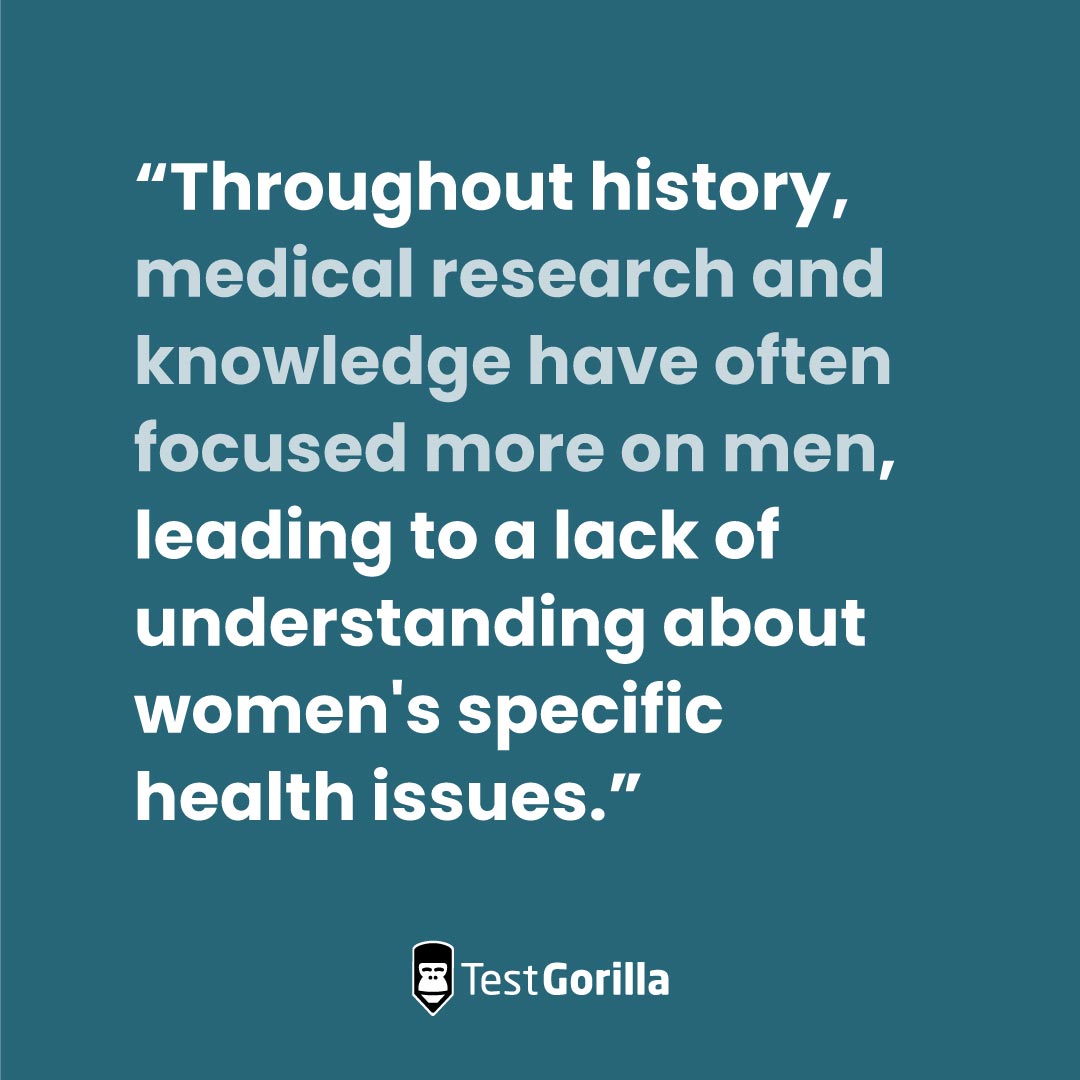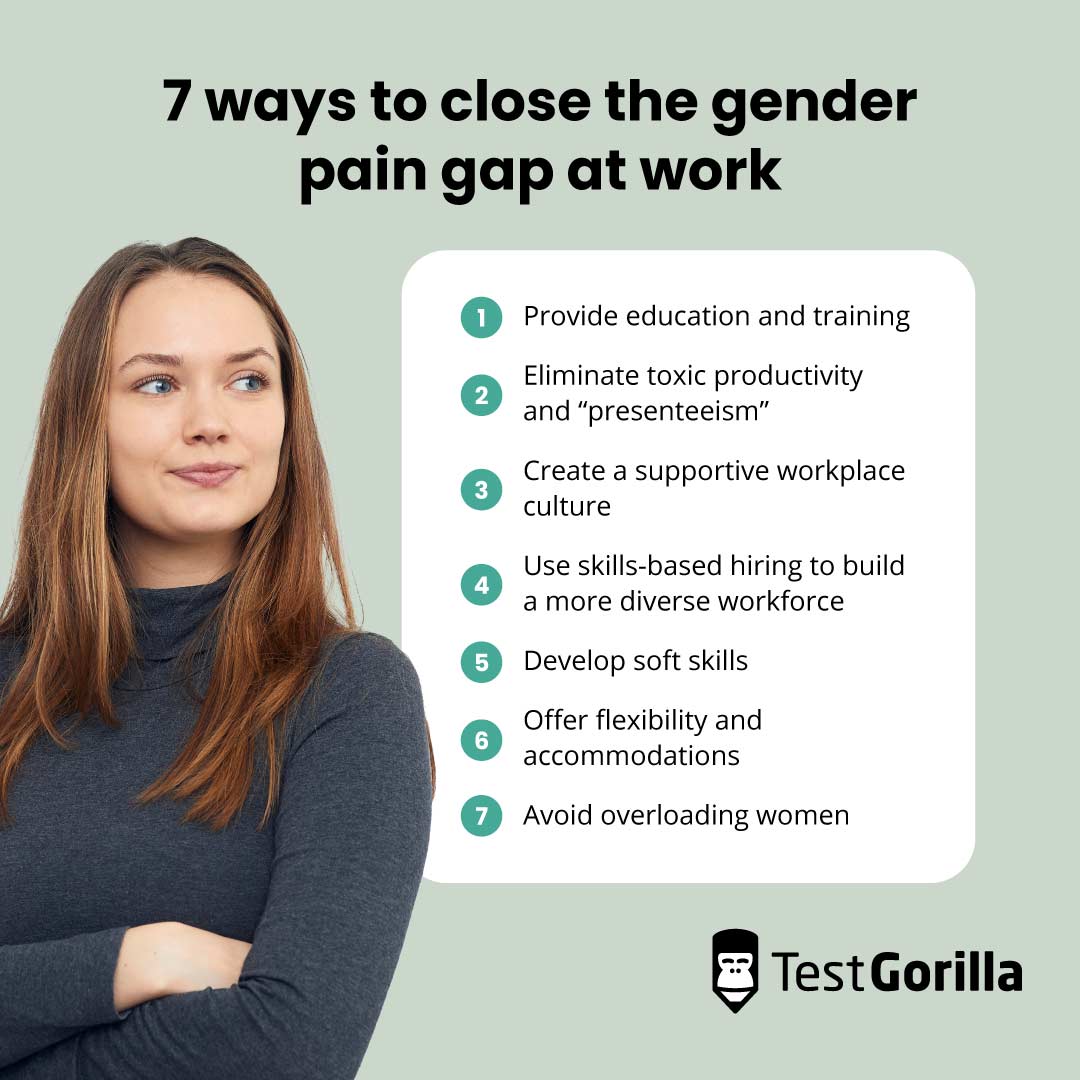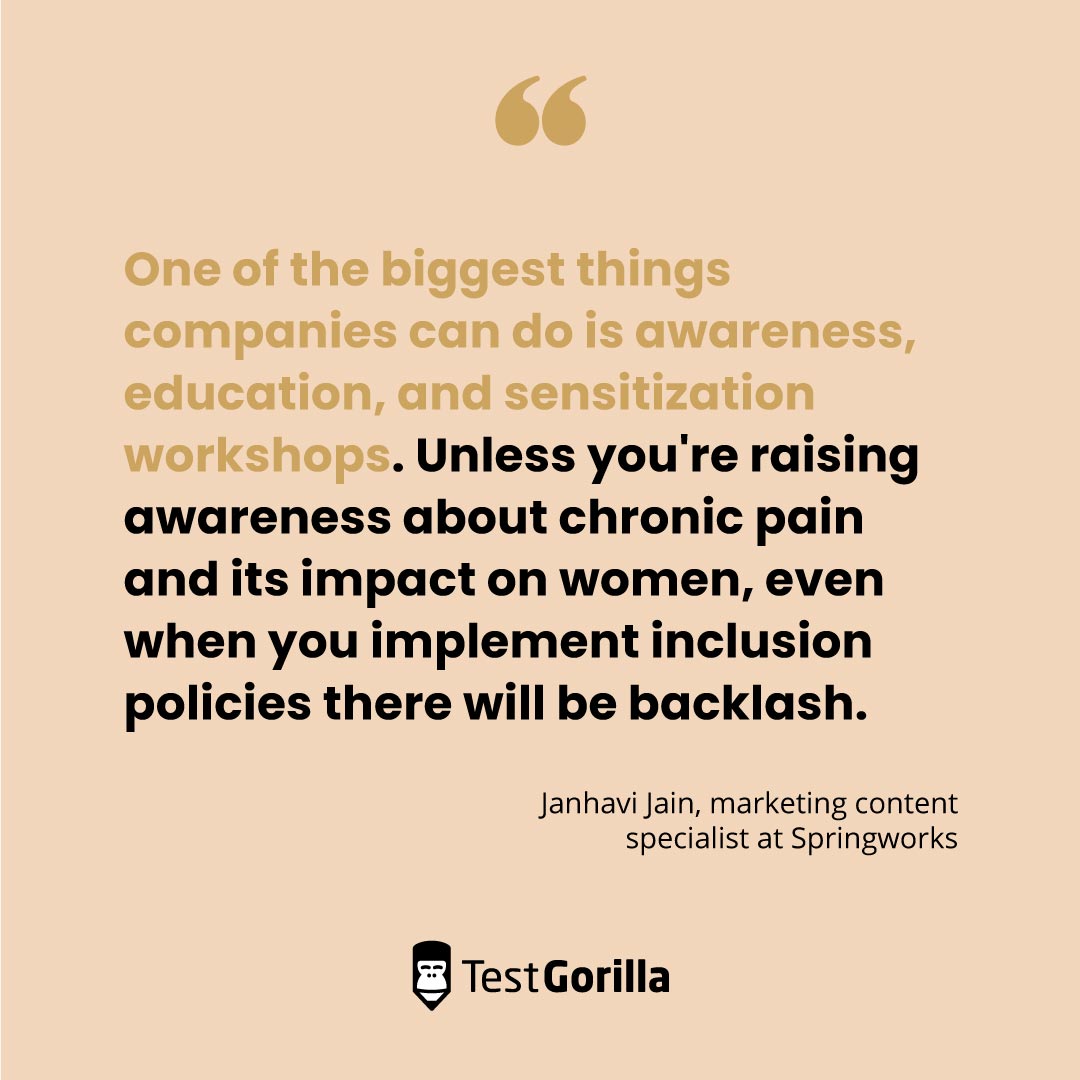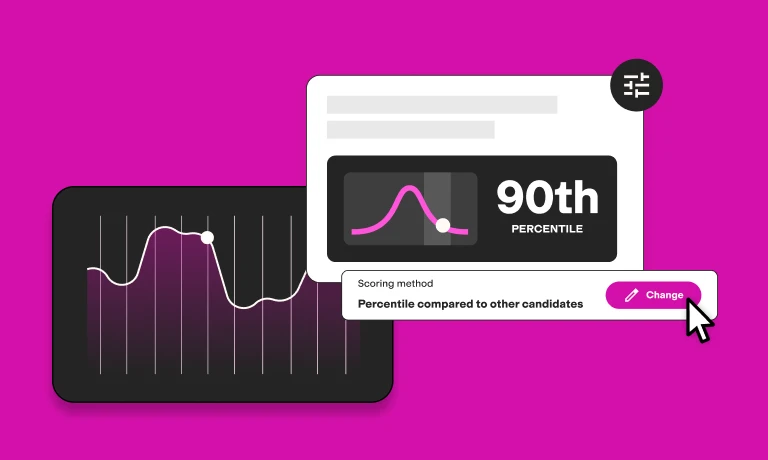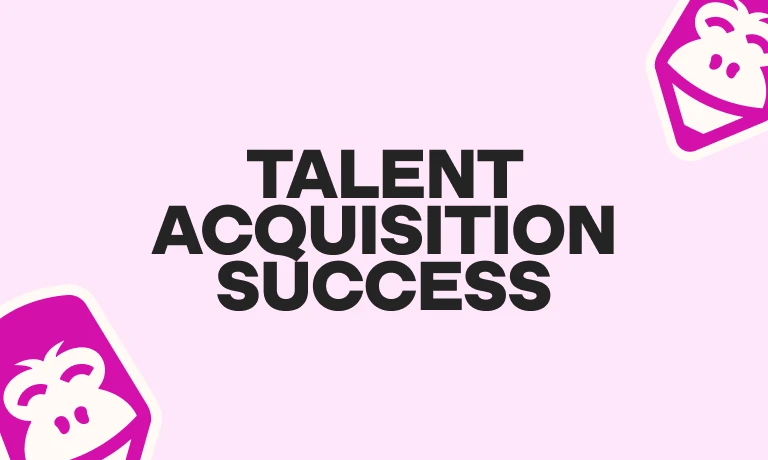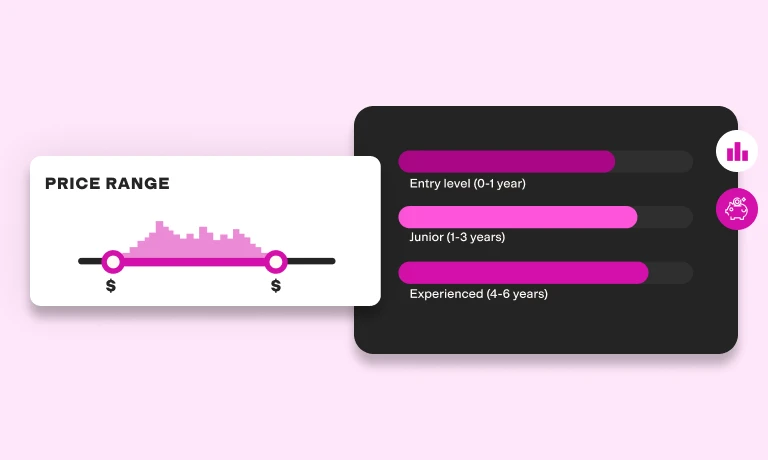Tell me if this hurts: How the gender pain gap affects your employees and business
Forty-eight percent of people believe there is a "gap" in the identification and treatment of pain between genders. Often, this is due to women’s pain not being taken seriously.[1]
This “gender pain gap” can negatively impact women and feminine-presenting employee’s well-being, confidence, attendance, productivity, and career opportunities.
For Black women, the issue is further compounded by the racial healthcare gap and stereotypes that Black people feel less pain.[2]
In this piece, we’ll look at the impact of the gender pain gap on companies, employees, economies, and society as a whole. We’ll also explore how a lack of diversity in certain industries contributes to the continued gap, affecting patients and customers.
Additionally, we’ll explore how limiting your pool of talent hinders your ability to generate ideas and products that would allow you to reach more demographics more effectively.
Finally, we’ll talk about how you can create a more supportive workplace environment that takes women’s pain seriously. For example, by using skills-based hiring to help you hire more diverse and, therefore, inclusive and understanding teams. Additionally, by developing the skills leaders and team members need to support their women coworkers.
What’s the gender pain gap?
Gender bias in healthcare negatively impacts women, transgender, and nonbinary individuals. However, as data is limited for some of these groups, this article focuses primarily on the experience of women.
The gender pain gap refers to the disparity in how medical conditions and pain are diagnosed, treated, and taken seriously across different genders. This often results in women's pain being downplayed or dismissed. However, women are more likely than men to experience chronic pain, which means they’re more frequently exposed to the gender pain gap.[1]
Conditions like endometriosis, fibroids, or even routine period pain and perimenopause symptoms are commonly misunderstood, misdiagnosed, or minimized by healthcare professionals and diagnoses are delayed. This often leads to depression in women, impacting their sleep and exercise routines.[1]
To make matters worse, only 36% of men believe a gender pain gap exists. This makes it easier to further ignore women's pain and claim they're being overly emotional.[1]
This lack of acknowledgment in the workplace and in health care can impact self-confidence, well-being, career opportunities, availability of support, and even productivity for women and feminine-presenting individuals.
What are the reasons for the gender pain gap?
There are many reasons for the gender pain gap, mostly rooted in historical bias, a lack of awareness, unconscious and conscious bias, and bias in research.
Throughout history, medical research and knowledge have often focused more on men, leading to a lack of understanding about women's specific health issues.
Moreover, most research and medical studies don't include any women at all, which can lead to less effective treatments for this subset of patients – and consumers.[3]
The gender pain gap is also rooted in societal beliefs and stereotypes that can lead to the assumption that women may exaggerate or be more emotionally affected by pain. This often results in their pain being disregarded.
When women and feminine-presenting people are ignored, it can negatively impact everyone in society, including in the workplace and in healthcare. It can also impact the success of your organization.
Next, we explore how the gender pay gap affects employees and companies alike.
How does the gender pain gap affect employees and companies?
A lack of diversity in certain industries contributes to the continued gap in understanding and catering to pain, which affects patients and customers. For example, a lack of representation in education, healthcare, and skincare leads to fewer treatments and products serving minority groups. This can make women and their pain feel invisible, which can significantly impact employee well-being, and your company as a whole.
Here's how:
Employees
A dismissive attitude toward women's pain can contribute to a toxic workplace culture where employees feel unsupported and undervalued. This can affect overall employee morale and engagement.
"You can't expect somebody who is not at their best to come and perform at their best," says Janhavi Jain, marketing content specialist at Springworks.
Moreover, women who are perceived as unreliable due to health issues, or who have historically taken more sick leave, might be overlooked for promotions and leadership opportunities. This can hinder their career growth, as well as their overall productivity, job satisfaction, and confidence.
The gender pain gap can also be worse for employees from marginalized groups or in service roles, where job security is more important than expressing the need for support.
Whatever the environment, when some team members feel unsupported, it can disrupt collaboration and strain team dynamics, affecting your people's ability to form close relationships at work. This can also erode trust in leadership and the company's commitment to employee well-being.
According to Gallup, employee stress levels are at an all-time high. There are many reasons for this, but managers play the biggest role in the stress employees feel on a daily basis. Therefore, creating an inclusive workplace can help reduce stress and restore trust.[4]
Companies
According to our 2022 Skills-Based Hiring report, companies do better when they build diverse teams. In fact, gender-diverse teams alone are 25% more likely to financially outperform less diverse companies.
By broadening your talent pool, you increase your ability to create innovative ideas and products that could help you effectively connect with a wider range of demographics.
However, those striving for diversity and inclusion may struggle to create an inclusive environment if they fail to acknowledge and accommodate women's unique health needs. For example, by learning how to support menstruating people at work. This can make you less attractive to top talent.
Only 28% of women will seek help from a medical professional if their pain is severe.[1] This means women are more likely to suffer in silence than get help. This, combined with the possibility that they may be ignored if they do, means women employees might even leave their jobs due to the stress of managing pain and feeling unsupported, which can lead to higher turnover rates and associated costs for companies.
Finally, ignoring women's pain and health concerns could also potentially lead to legal issues related to gender discrimination and unequal treatment in the workplace.
The best insights on HR and recruitment, delivered to your inbox.
Biweekly updates. No spam. Unsubscribe any time.
7 ways to close the gender pain gap at work
Below, we explore seven ways to close the gender pain gap, so you can make your company more diverse and inclusive, and attract and retain the best talent.
1. Provide education and training
Strong leadership is about building a taboo-free culture, where everyone can show up ready to do their best work and feel supported.
As mentioned, the gender pain gap is perpetuated by a range of biases and a lack of awareness of women's health and well-being. This is why it's important to offer education and training to employees and stakeholders, including training in women's health issues and unconscious biases.
"One of the biggest things companies can do is awareness, education, and sensitization workshops. Unless you're raising awareness about chronic pain and its impact on women, even when you implement inclusion policies there will be backlash." - Janhavi Jain, marketing content specialist at Springworks.
You can do this by organizing workshops, seminars, and webinars to introduce the concept of the gender pain gap and its implications. Additionally, implement unconscious bias training that explores how stereotypes and assumptions can contribute to unequal pain treatment. Then, provide information about seeking appropriate medical care and advocating for one's health needs.
By raising awareness, you can integrate the issue of the gender pain gap into your existing diversity and inclusion programs and emphasize how tackling it contributes to a more inclusive workplace culture.
2. Eliminate toxic productivity and “presenteeism”
No one should work when they're not well. This means you need to take steps to avoid a culture of “presenteeism” and have sickness and absence policies that don't penalize anyone for needing time off for health reasons.
This involves creating a healthier work environment where employees are valued for their well-being and the quality of their work, rather than just the hours they put in.
Here's how to do it:
Normalize breaks. Encourage short breaks throughout the day to recharge and improve focus.
Hold regular check-ins. Engage in regular one-on-one meetings to discuss workload, challenges, well-being, and progress.
Enable flexibility. Allow employees to have flexible work hours or remote work options to accommodate their personal needs.
Encourage work-life balance. Promote the use of vacation time, personal days, and sick leave, and discourage working during off-hours.
Provide mental health support. Offer resources like counseling services or Employee Assistance Programs to help employees manage stress and mental health.
3. Create a supportive workplace culture
It's crucial to foster an environment where employees feel comfortable asking for help and support when needed. As part of this, create psychological safety at work so people feel okay to speak up when they're in pain.
Additionally, create a culture where people have each other's backs so they can get support if they need it. Here’s how:
Encourage affinity groups (aka employee resource groups or ERGs). These are voluntary, employee-led groups designed to promote an inclusive, diverse, and supportive workplace.
Foster inclusive leadership. Train managers to be understanding and responsive to employees' health challenges, fostering trust and support.
Provide access. Create open channels of communication where employees feel comfortable discussing their health concerns with managers and HR, and provide the resources to help them do so.
Maintain transparent policies. Ensure that policies related to sick leave, medical accommodations, and health-related absences are transparent and fair.
4. Use skills-based hiring to build a more diverse workforce
A diverse workforce will likely be more inclusive and understanding of the challenges individual team members face.
Building diverse leadership teams that include more women can help build a team and workplace culture that will be more sympathetic to women's pain. It's also more likely that women employees will feel more comfortable turning to women managers when it comes to discussing personal issues such as their health at work.
Skills-based hiring can help you hire candidates who have the right skills for the role, regardless of their gender, physical ability, and ethnicity. Talent assessments let you bypass unconscious bias and level the playing field for diverse candidates.
With skills-based hiring, you and your candidates get a more accurate picture of their potential success in the role, so hiring for skills also increases employee retention and satisfaction. This makes it easier to build a strong company culture with employees who actively add to it instead of only fit into it.
Here are some talent assessments you can use to recruit a wider range of people:
5. Develop soft skills
With talent assessment software, you can reskill and upskill employees, helping them and your leadership team develop the skills needed to build an inclusive and supportive work culture.
This way, you can track employee and leadership progress toward developing new skills, including soft skills like active listening and empathy. Focusing on soft skills can help you create a team of tightly-knit employees, who know how to communicate and relate to each other.
Here are some of our recommended skills-based assessments to test soft skills:
6. Offer flexibility and accommodations
When you offer flexible arrangements to your employees, it can help your people better manage their pain while adding to a psychologically safe space.
For example, speaking with a manager about a health or physical condition can sometimes bring additional discomfort and stress. This is because it can make that person feel exposed and vulnerable, especially if they’re not comfortable discussing such matters in a professional setting or their manager isn’t sympathetic. Offering remote or hybrid work can help ease this type of stress by letting people work from home more often without needing to ask for special accommodations.
It's important to offer flexibility and accommodations in working hours and work shifts – and build in regular bathroom breaks – to accommodate those suffering pain or medical conditions.
If someone is suffering, make it easier for them to choose to take a day off or stay at home. If they’re in the office, it should be feasible for them to take breaks when they need to. You should also offer flexibility in the choice of uniforms or clothing so women aren't restricted to clothing that can exacerbate pain.
7. Avoid overloading women
Women are more likely to do more “invisible” work, both in the workplace and at home, which can often overburden them. This is because women largely operate under the assumption that they're "naturally" better at nurturing and caregiving. Therefore, they often take on emotional support and administrative roles they aren't paid for, as well as more household responsibilities.[5]
For women dealing with equally "invisible" pain, this can all feel emotionally, mentally, and physically draining. Therefore, it's crucial to check in with your women employees and get a firm understanding of what they have on their plates to avoid overloading them.
Make sure to also encourage open communication and honest feedback so they know they can turn to you for support.
Skills-based hiring as a way to close the gender pain gap
Despite the prevalence of pain among women and its impact on their quality of life, their pain is often underdiagnosed by healthcare professionals and dismissed in the workplace.
This gender pain gap can be harmful to employees and companies, and negatively impact your diversity and inclusion efforts and employee retention strategies alike.
Therefore, it's important to take steps to create a truly diverse and inclusive workforce. For instance, by providing education and training, developing soft skills, and offering flexibility and accommodations. This way, you can get better business and employee outcomes like improved performance and team morale.
Additionally, when you take a skills-based approach to recruiting, you can hire and retain more diverse talent that adds to an inclusive company culture. This positively impacts the well-being of all your employees, regardless of gender.
Hiring more diverse teams also lets you come up with more innovative products and services that appeal to wider demographics – which positively benefits your bottom line.
Want to build a thriving team and workplace? Skills-based hiring lets you hire diverse talent with the skills to put all your people first. |
Sources:
"Gender Pain Gap Index Report." (2022). Nurofen. Retrieved August 22, 2023. https://www.nurofen.co.uk/static/nurofen_gpg_report_nov-2022-54693dac1565d22a8bbd0b209b60c488.pdf
"Black Americans are Systematically Under-Treated for Pain. Why?" (2020). UVA. Retrieved August 22, 2023. https://batten.virginia.edu/about/news/black-americans-are-systematically-under-treated-pain-why
"Clinical research: Inequality in medicine." (2017). Nature.org. Retrieved August 22, 2023. https://www.nature.com/articles/550S18a
"State of the Global Workplace: 2023 Report." (2023). Gallup. Retrieved August 22, 2023. https://www.gallup.com/workplace/349484/state-of-the-global-workplace.aspx
"Gender differences in the association between unpaid labor and mental health in employed adults: a systematic review." (2022). The Lancet Public Health. Retrieved August 22, 2023. https://www.thelancet.com/journals/lanpub/article/PIIS2468-2667(22)00160-8/fulltext#%20
Related posts
You've scrolled this far
Why not try TestGorilla for free, and see what happens when you put skills first.


